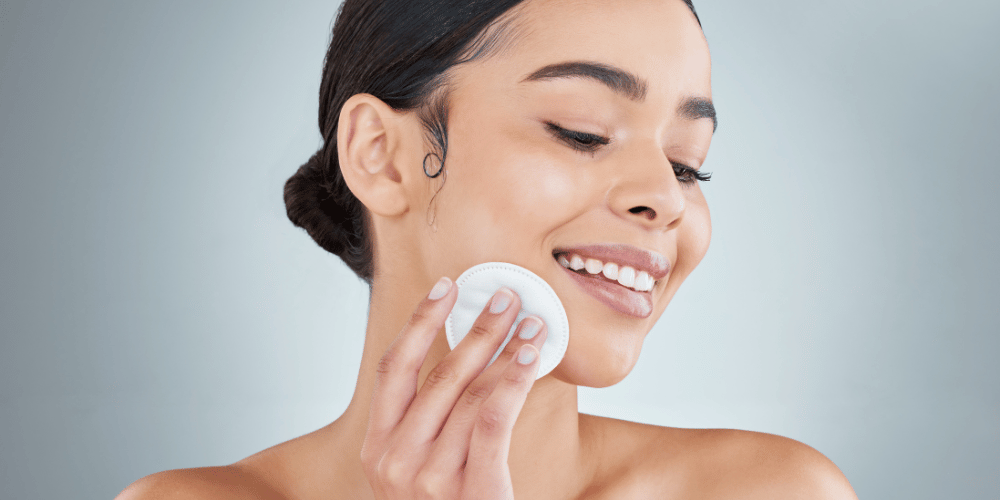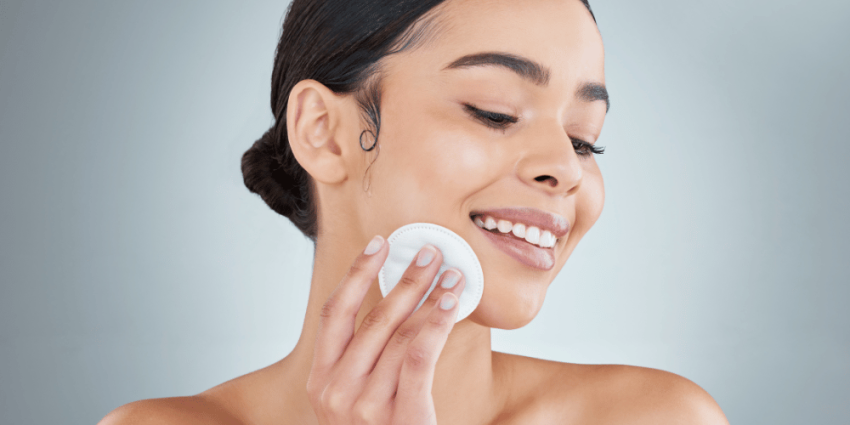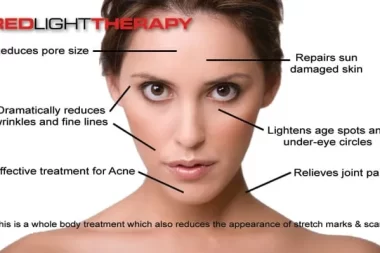Exfoliating your face is an essential part of any skincare routine. It helps remove the buildup of dirt, oil, and dead skin cells that can clog your pores and cause irritation. But how often should you exfoliate your face? The answer depends on several factors, including your skin type and the products you’re using. In this blog post, we’ll discuss the different types of exfoliants available as well as what sort of frequency is recommended for each one. We’ll also provide tips on how to properly use exfoliators so that you can get the best results for your skin.
What is exfoliation and what are its benefits?
Exfoliation is the process of removing dead skin cells from the surface of your skin. This can be done mechanically, using a facial scrub or brush, or chemically, using an exfoliating cleanser or toner. Exfoliation has several benefits for your skin, including improving its texture and appearance, reducing the appearance of fine lines and wrinkles, and helping to unclog pores.

How often should you exfoliate your face?
There is no one-size-fits-all answer to this question, as the frequency with which you exfoliate your face will largely depend on your skin type. If you have sensitive skin, you may only want to exfoliate once a week or even less often. On the other hand, if you have oily or combination skin, you may need to exfoliate 2-3 times a week. The best way to determine how often you should exfoliate your face is to experiment and see what works best for you.
The best products for exfoliating your face
When it comes to exfoliating your face, there are a lot of different products on the market. It can be overwhelming trying to figure out which one is right for you. But don’t worry, we’re here to help.
We’ve rounded up the best products for exfoliating your face, so you can choose the one that’s right for your skin type and needs.
For gentle exfoliation: If you have sensitive skin or are new to face exfoliation, start with a gentle product. We recommend the Dermalogica Daily Microfoliant. This rice-based powder is activated by water, so it’s super easy to use. Just add a small amount to wet hands and massage it into your skin in circular motions. It contains papain, an enzyme that breaks down dead skin cells, and salicylic acid, which helps clear pores.
For moderate exfoliation: If you’re looking for a little more oomph from your exfoliator, try the Murad AHA/BHA Exfoliating Cleanser. This gel cleanser contains glycolic and lactic acids to slough away dead skin cells and unclog pores. It also has jojoba beads for gentle physical exfoliation. Massage it onto damp skin and rinse with water.
For intense exfoliation: If you have tough, stubborn dead skin cells that just won’t budge, reach for the Kate Somerville ExfoliKate Intensive Exfoliating Treatment. This leave-on scrub contains natural fruit enzymes and lactic acid that dissolve dead skin cells, while physical exfoliants help buff away roughness. Use it up to twice a week or as needed.
No matter which product you choose, be sure to follow up with a moisturizer to keep your skin hydrated and protected.
How to exfoliate your face
If you’re looking to achieve radiant and glowing skin, exfoliation is key. Exfoliating helps to remove dead skin cells from the surface of the skin, revealing the new, fresh skin underneath. When it comes to exfoliating your face, there are a few different ways you can go about it.
One way to exfoliate your face is by using a physical exfoliator. Physical exfoliators typically contain small beads or granules that help to slough away dead skin cells when rubbed onto the skin. Just be sure to use a physical exfoliator gently, as over-exfoliating can lead to irritation and dryness.
You can also opt for a chemical exfoliator, which uses acids or enzymes to break down the bond between dead skin cells and healthy skin cells. Chemical exfoliators can be found in both leave-on products and wash-off formulas. Start slowly with chemical exfoliation if you’re new to it, as these products can sometimes cause irritation if used too frequently or too aggressively.
Finally, you can also create your own DIY facial scrub at home using ingredients like honey, sugar, or oatmeal. Simply combine one of these ingredients with water or oil and massage it onto your face in circular motions before rinsing clean.
What is exfoliation?
Exfoliation is the process of removing dead skin cells from the surface of the skin. This can be done mechanically, using a scrub or brush, or chemically, using an exfoliating agent such as glycolic acid or lactic acid. Exfoliation is important for keeping the skin looking fresh and radiant, and for preventing clogged pores and breakouts. It also helps to slough off any dry, flaky patches that may have developed.
Most people can benefit from exfoliating once or twice a week. However, those with very sensitive skin may need to exfoliate less often, while those with oily or acne-prone skin may need to exfoliate more frequently. It’s important to listen to your skin and adjust your exfoliation routine accordingly.
The benefits of exfoliation
Regular exfoliation has many benefits for the skin. It can help to improve the appearance of the skin by helping to slough off dead skin cells and revealing new, healthy skin cells underneath. Exfoliation can also help to unclog pores and prevent breakouts. Additionally, regular exfoliation can help to reduce the appearance of fine lines and wrinkles.
How often should you exfoliate your face?
If you have oily or acne-prone skin, you should exfoliate your face 1-2 times a week. If you have dry or sensitive skin, you should exfoliate your face 1-2 times a month.
It’s important to remember that everyone’s skin is different, so you should adjust your exfoliation routine accordingly. If your skin starts to feel dry or irritated, you may need to cut back on how often you’re exfoliating.
The best ways to exfoliate your face
There are a few different ways that you can exfoliate your face, and the best method for you may depend on your skin type. If you have sensitive skin, you might want to try a gentle daily exfoliating cleanser. For people with oily skin, an exfoliating scrub might be a better choice. And for those with dry skin, using an exfoliating mask or peel once or twice a week can help to slough off dead skin cells and leave your face looking radiant.
When it comes to exfoliating your face, it’s important not to overdo it. Be sure to use gentle circular motions when scrubbing your face, and avoid any harsh rubbing or scrubbing. It’s also important to moisturize after exfoliating, as this can help to soothe and protect your skin.

Conclusion
In conclusion, we have discussed why exfoliating your face is important and how often it should be done. Exfoliation helps to remove dead skin cells and other impurities from the skin, leaving you with a softer and smoother complexion. To get the best results, it is recommended that you exfoliate your face two to three times per week. Try different products on rotation so that your skin can benefit from the benefits of each one and make sure to listen to your skin if it feels too dry or irritated after exfoliation.










Leave a Reply